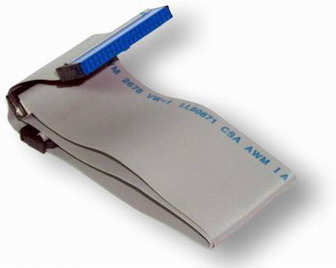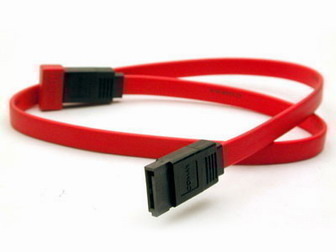ATA (AT Attachment)
ATA (AT Attachment) is the primary standard for connecting storage to PC’s.
ATA replaced earlier technologies such as MFM, RLL, and ESDI. ATA is currently SCSI‘s major competitor.
ATA is a specification for attaching hard drives to the AT bus. The AT specification has been extended to include other storage, such as CD/DVD drives, tape drives, and Zip drives with the Advanced Technology Attachment Packet Interface (ATAPI) additions to the specification. It is also known as IDE (Integrated Drive Electronics).
Parallel ATA Cables
Parallel ATA cables originally had 40 wires. With the introduction of ATA-5, parallel ATA cables with 80 wires became standard. Only 40 wires are used to carry signals. The additional 40 wires exist to provide a ground wire for each signal wire.
These grounding wires enable the ATA subsystem to operate at higher speeds with greater reliability.
ATA Masters and Slaves
Each ATA bus supports two storage devices. The first storage device is called “Master” and the second storage device is called “Slave”.
There are two methods for configuring which device is the master and which is the slave: drive jumpers and cable select.
Drive Jumpers
The original method for configuring Master and Slave relation on ATA drives was to place or remove jumpers on each storage device.
The jumper definitions differ among drive manufacturers and models. The jumper setting are often printed on the drive. If not, read the drive manual or visit the drive manufacturers web page.
In a single drive configuration, some drives should be set to “Single Drive”, while other drives should be set to “Master”.
In a dual drive configuration, one drive should be set to Master and the other drive should be set to Slave.
Cable Select
A newer standard for configuring the Master/Slave relation on ATA drives is to allow the position of the drives on the drive cable to determine the ordering.
For Cable Select to work, both of the drives and the ATA cable must support cable select.
To use Cable Select, the jumpers on both drives should be set to Cable Select.
Parallel ATA vs. Serial ATA
All versions of ATA up until ATA-7 in 2004 utilized parallel transfer of data from the motherboard to the drive controller built onto the disk.
The ATA-7 specification introduced Serial ATA.
The most obvious change with Serial ATA is the difference in drive cables. Other differences include:
- Higher throughput
- Revised power connector
- Longer data cables
- Support for external drives (eSata)




Comments - No Responses to “ATA (AT Attachment)”
Sorry but comments are closed at this time.